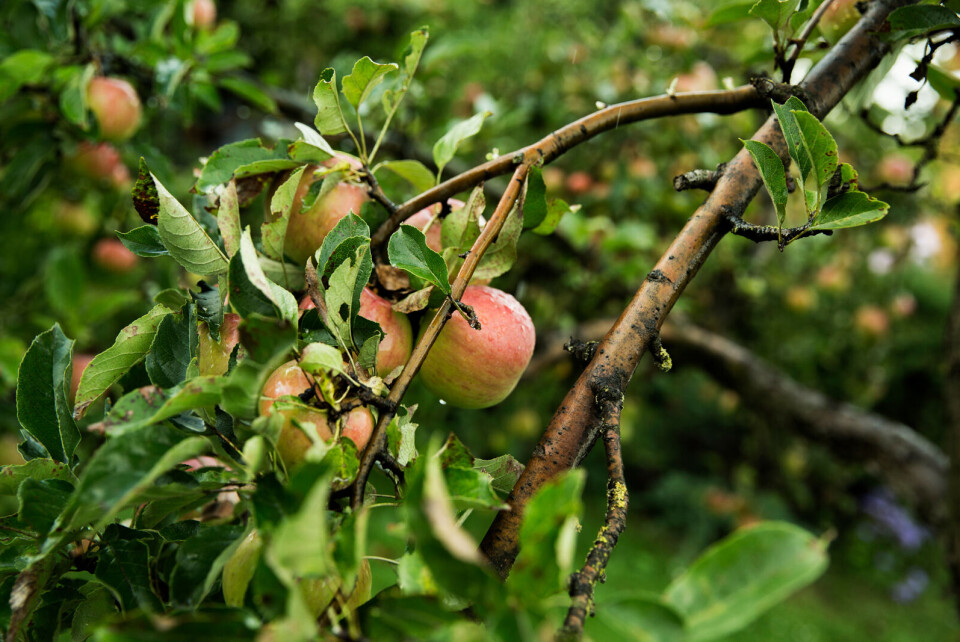-
The origins and meaning of tirer les marrons du feu
As Christmas approaches, we look at a phrase to describe someone who takes advantage of a situation
-
All wrapped up for Christmas: how to protect your plants in France this winter
Discover effective methods to shield your garden plants from winter frost and cold, ensuring their survival and health through the chilly months
-
Preparing your French garden for the festive season and the year ahead
Christmas veg harvest, sustainable Christmas tree options and great deals on outdoor furniture for next summer
Gardening in France: Apple tree troubles
'Oh, for a lovely juicy apple in January. But, please, can I have one with no guilty air miles? Preferably one that I’ve picked and stored myself'

It was that urge of chasing the no-guilty- air mile-apple that drew me down the rabbit hole of one of the most confusing horticultural specialities I’ve encountered: apple and pear growing. What to choose, how to train, when to prune?
I grafted my nine apple trees myself, courtesy of the annual bourse (trade) of ‘scions’ run by my local Croqueurs de Pommes on the first Sunday of February 2014. (The scion is the short vegetative part of the cultivar you want to grow that is then deftly – or not, in my case – attached by a cute bit of carpentry to the rootstock.). My ignorance was profound as I wandered around the confusing array of choice at that first bourse. I should have done my January homework!
What would you choose? If your dream, like mine, is a home-grown apple in January, you should go for apples that can be picked latish (say, mid-October) and keep well through until March.
Here are some of the best, all of which are happily pollinated by ‘Reine des Reinettes’:
- 'Reinette Grise du Canada’. An old heritage cultivar and the default russet in France. Keeps through until May (they say!) when harvested mid-October.
- Calville Blanc d’Hiver’ and ‘Calville Rouge d’Hiver’. Heritage varieties, known as far back as 1598 in the case of the ‘Blanc’. They are a peculiar, rather lumpy shape and the gourmet apple of French chefs, preferred for Tarte Tatin. The initial, rather sharp, taste grows sweeter in storage. Believe it or not, they contain more vitamin C than an orange.
- ‘Cox’s Orange Pippin’ stays true with storage, but it doesn’t like a lot of heat in cultivation, so not useful south of the Loire.
- ‘Braeburn’ is my final choice – it almost matches ‘Cox’s Pippin’ for ‘eatability’ and keeping!
As well as choosing your varieties, January is also a good month to be pruning and training
An open-grown bush or tree is fairly straightforward to prune and train. But what about espaliers? I chose that form in my own garden because I wanted to divide up the open space at the bottom of the garden with decorative screens that would give me a sense of different ‘rooms’.
My espaliers are planted to be trained against four wires, strained horizontally between posts, each wire about 40-45cms apart. In theory I’ll be able to do without the wires and posts later on, but I’m not sure if I’ll be around that long!
In the first winter after planting, cut the young trees back to just above the first wire. Leave three buds at the tip. The top bud is for vertical growth and below it there should be two buds, one facing right, one left. The central bud growth that arises in the spring will be trained vertically to continue up to the next wire, the growth from the other two is trained to bamboo canes tied to your wires at an angle of about 45 degrees.
The following winter you can tie down these branches to the horizontal wires, removing the canes completely. But don’t be in too much of a hurry, as premature horizontal training will depress growth. Prune back to 10 to 13cms any other shoots that arise from the central stem. Rinse and repeat in the years that follow until the top wire is reached – et voilà! You have your fruiting framework and can just concentrate on summer pruning in August.
Choice of cultivars for espaliers?
I now know that spur-bearing trees – such as all of the good ‘keepers’ I’ve suggested above – make the best espaliers. Their fruit is entirely produced on very short spurs arising from the main horizontal ‘arms’ of the tree, which allows you to prune very hard in August; summer pruning is much more extreme on an espalier than it would be on a less formally grown tree.
All of the vegetative growth of that season, arising from the horizontal ‘arms’ of the espalier, is cut away completely to just three buds above the basal cluster of leaves that sprout from the wood of the ‘arm’.
Here’s where I really boobed, because when I grafted my plants in 2014 I chose two cultivars which, although extremely good, are partial tip-bearers. ‘Transparente Blanche’ and ‘Blenheim Orange’ do a sizeable proportion of their fruiting at the tips of their vegetative growth – growth which, of course, I am busily pruning away in August! Fortunately, my two are not true tip-bearers and do produce short fruiting spurs next to the structural branches as well. Only time will tell if they produce enough short fruiting spurs to justify having trained them as espaliers!
The rabbit hole goes on and on... and I continue to worm my way to the bottom. If only I’d done my homework more thoroughly. But don’t be deterred by my experience – grafting and growing fruit trees formally is immensely rewarding and there is usually a way to remedy your ‘mistakes’.
Have you got a favourite apple cultivar? I’d love to hear why you like it. Feel free to get in touch – email me at editor@connexionfrance.com
























